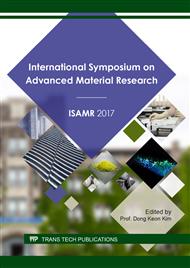p.300
p.305
p.310
p.315
p.321
p.326
p.331
p.337
p.343
Experimental Study on Performance of Short-Bonding Interface between CFRP and Concrete
Abstract:
Based on double shear test, to study the performance of FRP and concrete bonding interface as the FRP sheet bond length is relatively short (hereinafter referred to as short bond). This paper mainly focuses on the research of interface failure modes, ultimate bearing capacity, interface fracture energy, the development and distribution regularity of strain and stress. Therefore, the interface bond slip relationship curve is obtained through differential operation and data regression analysis on FRP strain values which was gained from test. Results show that: (1) under the condition of short-bonding, damage form of FRP and concrete bonding interface is shear failure which caused sudden destruction to the inner of concrete block; (2) The ultimate bearing capacity, interface fracture energy and maximum shear stress increase with the improvement of concrete strength; (3) the interface shear stress - slip curve is obviously featured as nonlinear, composed of rising and falling, basically presents as a parabolic shape.
Info:
Periodical:
Pages:
331-336
Citation:
Online since:
August 2017
Authors:
Keywords:
Price:
Сopyright:
© 2017 Trans Tech Publications Ltd. All Rights Reserved
Share:
Citation:


